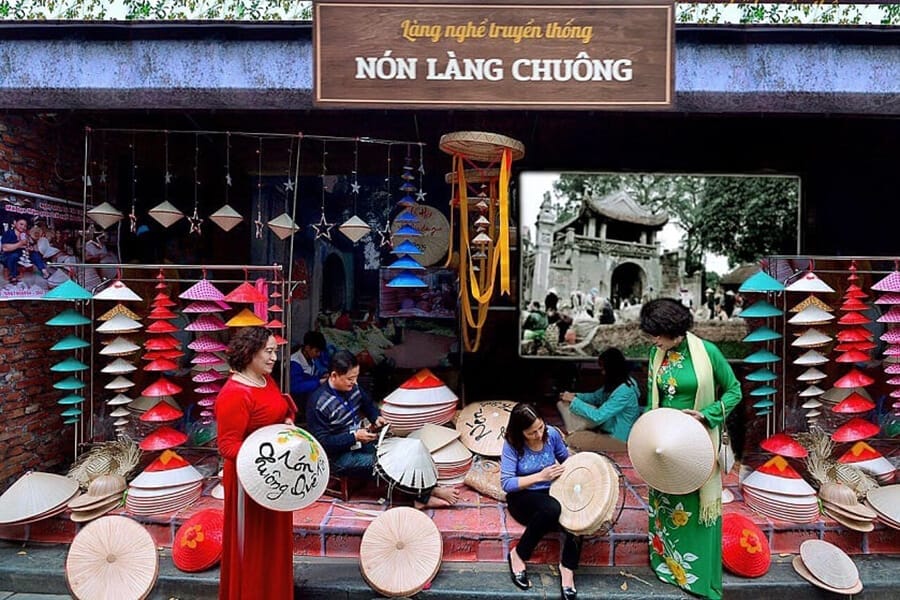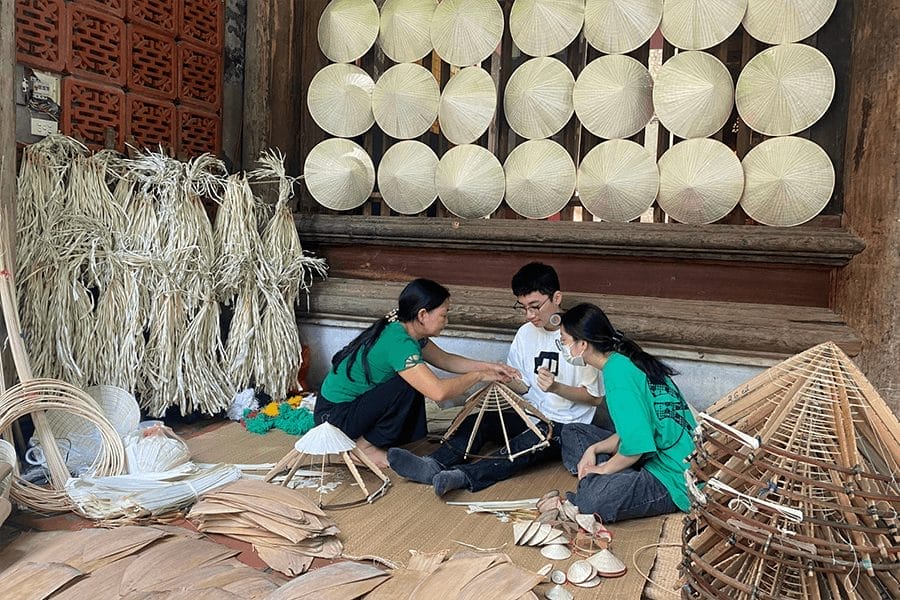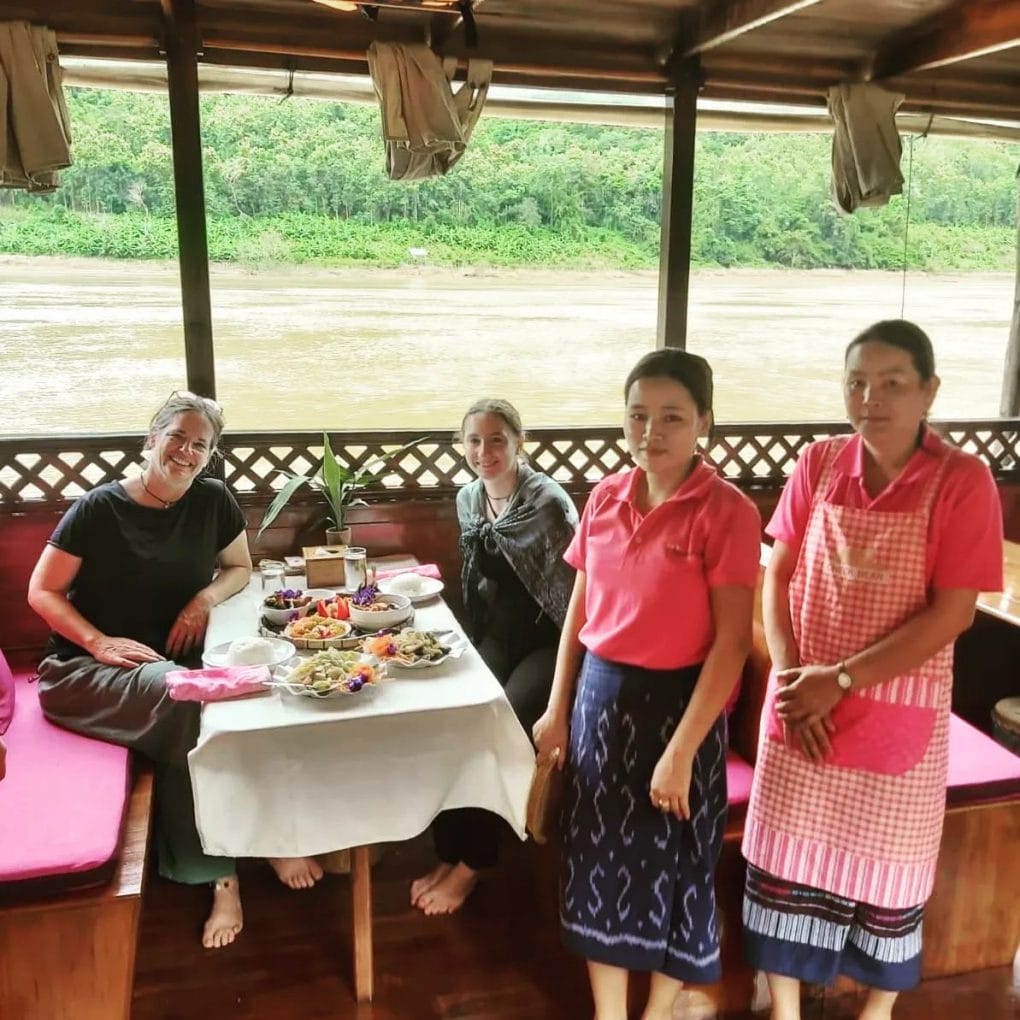Vietnam is a country rich in culture and tradition, and its handicrafts are a testament to its vibrant heritage. Among the many fascinating craft villages, Chuong Conical Hat Village stands out as a symbol of Vietnamese identity. Known for its iconic Vietnam handicraft products, this village showcases the unique artistry behind the non la (conical hat), a timeless accessory in Vietnamese life.

The Legacy of Chuong Conical Hat Village
Nestled in Thanh Oai District, about 30 km from Hanoi, Chuong Village has been crafting conical hats for over three centuries. This legacy has made the village a cultural icon, drawing tourists and researchers alike who seek to explore the history of Vietnam handicraft. Passed down through generations, the craftsmanship of these hats reflects the villagers’ dedication and skill.
The conical hat, or non la, isn’t just a handicraft product in Vietnam; it’s a cultural symbol. Traditionally worn by farmers and traders, it represents simplicity, elegance, and utility. The hats crafted in Chuong Village are especially valued for their lightweight, durability, and aesthetic appeal.
The Artistry Behind Chuong Conical Hats
What makes Chuong Village’s non la exceptional is the meticulous craftsmanship involved. Each hat undergoes several steps, including:
-
Selecting Materials
Only the finest palm leaves are chosen, ensuring the hats are both durable and lightweight. -
Shaping the Frame
Bamboo is skillfully bent into a circular frame that defines the hat’s shape. This step requires precision and expertise. -
Stitching and Finishing
Using silk thread, artisans stitch the palm leaves onto the frame, creating intricate patterns that enhance the hat’s beauty.
Such attention to detail exemplifies why Chuong’s conical hats are renowned among Vietnam handicraft products.
Cultural Significance and Modern Appeal
The conical hat isn’t merely a fashion statement; it holds profound cultural significance. It protects wearers from harsh weather while embodying the grace and resilience of Vietnamese women. Today, these hats have gained international recognition as a symbol of Vietnam’s rich heritage.
Moreover, Chuong Village has adapted to modern demands by creating decorative conical hats used for souvenirs and art installations. This blend of tradition and innovation ensures the village’s place in the evolving landscape of Vietnam handicrafts.
Why Visit Chuong Conical Hat Village?
Visiting Chuong Village offers a unique opportunity to witness the art of conical hat-making firsthand. Travelers can interact with artisans, learn about their techniques, and even try crafting their own hats. It’s an immersive cultural experience that highlights the charm and authenticity of handicraft products in Vietnam.

FAQs about Chuong Conical Hat Village
Q1: What is the history of Chuong Conical Hat Village?
A1: The village has a history spanning over 300 years, known for crafting high-quality non la using traditional techniques passed through generations.
Q2: How are Chuong conical hats different from others?
A2: Chuong hats are prized for their lightweight design, durability, and intricate craftsmanship, distinguishing them from other hats made in Vietnam.
Q3: Can tourists participate in making conical hats?
A3: Yes, visitors can engage in workshops where they learn the steps involved in crafting these iconic hats.
Q4: What other attractions are near Chuong Village?
A4: Nearby attractions include ancient pagodas and markets where you can explore more Vietnam handicraft products.
Q5: Why is the non la significant in Vietnamese culture?
A5: The non la represents grace, utility, and Vietnamese identity, widely used in daily life and cultural events.
Experience the charm of Chuong Conical Hat Village!
Explore the artistry of Vietnam’s iconic non la and take home a piece of cultural heritage. Book your tour today!













